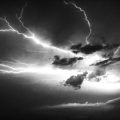1. Introduction: The Lore of British Spring Skies
As winter recedes and spring stirs in the heart of Britain, the night sky becomes a canvas of renewal and tradition. Stargazing, a practice steeped in British history, takes on fresh meaning with each turn of the season. In villages and cities alike, people look upwards—not only to marvel at the constellations but also to seek subtle hints about what the coming months might bring. This connection between celestial patterns and earthly happenings is woven into local folklore, from tales told around countryside fires to scientific discussions in community observatories. The transition from winter’s long nights to spring’s gentle evenings brings a sense of anticipation, as familiar constellations appear to shift and new stars grace the horizon. For many in Britain, these seasonal changes are more than astronomical events; they are part of a cultural rhythm that blends wonder, tradition, and prediction.
Key Spring Constellations Above Britain
As spring unfolds across the UK, our night skies reveal a cast of constellations that have fascinated Britons for centuries. Among these, Leo and Virgo stand out as especially prominent during the season, both visually striking and steeped in local folklore. Observing these star patterns not only connects us to our ancestors but also offers a sense of continuity amid the changing British weather.
Major Spring Constellations in the UK
| Constellation | Visibility Period | Folklore & Significance |
|---|---|---|
| Leo (The Lion) | March – May | Seen as a symbol of strength and regality, Leo has inspired tales from medieval British courts, often linked to royalty and courage. |
| Virgo (The Maiden) | April – June | Associated with the coming of harvest and new beginnings, Virgo is tied to ancient agricultural festivals throughout rural England. |
| Böotes (The Herdsman) | April – July | This constellation is said to watch over shepherds and their flocks, echoing Britain’s pastoral traditions. |
| Ursa Major (The Great Bear) | Year-round, prominent in spring evenings | The Plough, part of Ursa Major, is a familiar sight and a crucial navigation tool for centuries of British travellers and farmers. |
The Role of Folklore in British Stargazing
Folklore enriches how we interpret the stars above. For example, Leo’s arrival was historically seen as heralding warmer days and a time for planting—a notion still echoed in some rural communities. Virgo’s presence coincides with traditional May Day celebrations, symbolising renewal and hope after the long winter. These stories are passed down through generations, shaping seasonal predictions and local customs alike.
Navigating Modern Nights with Ancient Wisdom
Today, while light pollution challenges our view of the night sky in cities like London or Manchester, many rural areas retain dark skies perfect for constellation spotting. Whether you’re an amateur astronomer or simply enjoy a clear evening stroll, recognising these spring constellations can deepen your appreciation for both Britain’s natural beauty and its cultural heritage.

3. Traditional British Weather Lore and Celestial Signs
Britain has always had a close relationship with the weather—a relationship so deep-rooted that it has shaped our folklore, language, and even our everyday conversations. The arrival of spring is a particularly fertile time for old sayings and rural traditions, many of which tie the night sky to predictions about the coming months. One classic example is the belief that a clear view of certain constellations, such as Orion or the Plough (known in some circles as the Great Bear), on early spring evenings heralds fair weather ahead. In regions like Yorkshire and Cornwall, generations have passed down rhymes linking the brightness or position of these stars with hopes for gentle rain or extended sunshine.
These traditions weren’t just idle superstition—they were born from keen observation over centuries by shepherds, farmers, and sailors who depended on the land and sea. For instance, “If you can count the stars in Orion’s Belt before dawn in March, expect a dry summer” is one saying that echoes through rural communities. Similarly, spotting Venus—often called the “Evening Star”—shining brightly at dusk was seen as a sign that mild days were soon to follow.
This intertwining of celestial observation and local weather lore gave people a way to prepare for planting, harvesting, or simply planning village festivities. While modern meteorology may have overtaken these old methods, there’s still a certain charm—and occasional accuracy—in looking up at Britain’s spring sky and recalling what our ancestors believed it foretold.
4. Modern Astronomy Meets Local Superstition
In today’s Britain, the relationship between cutting-edge astronomy and enduring folk beliefs about the spring constellations is both complex and fascinating. While our universities and research centres decode the universe with advanced telescopes and data models, many people—especially in rural communities—continue to find meaning in the traditional stories told by the stars. Urban areas, meanwhile, reflect a blend of scientific awareness and nostalgia for these older customs. Let’s explore how modern science contrasts with, and occasionally complements, local superstition when it comes to springtime celestial predictions.
The Science: What Do Astronomers Say?
Contemporary astronomers view constellations as arbitrary groupings of stars with no direct influence on earthly events. The arrival of constellations such as Leo, Virgo, or Bootes in the spring sky is simply a function of Earth’s orbit around the Sun. For scientists, these patterns are useful only as markers to navigate the night sky or to schedule observations of meteor showers and planetary alignments. Weather prediction is now based on atmospheric data, satellite imaging, and computer modelling—far removed from any astrological readings.
The Tradition: Folk Beliefs Still Alive
Despite scientific advances, many British people still associate certain constellations with seasonal shifts or even luck. In some villages, spotting Orion low on the horizon at dawn is said to warn of late frosts; in parts of Scotland, the first appearance of Arcturus (in Bootes) might be taken as a sign that it’s safe to plant potatoes. Urban dwellers may be less reliant on these signs but often recall them as part of family lore or local festivals.
Comparison Table: Science vs. Superstition
| Aspect | Scientific View | Folk Belief |
|---|---|---|
| Constellation Appearance | Due to Earths orbit; predictable | Signals change in season or weather |
| Weather Prediction | Uses meteorology and satellites | Certain stars foretell frost or warmth |
| Cultural Significance | Mainly educational or navigational | Tied to planting, festivals, luck |
A Cultural Coexistence
This coexistence of belief systems speaks volumes about Britain’s layered identity. In the countryside, local superstitions offer comfort and continuity with the past—even as farmers check apps for weather updates. In cities, star-gazing clubs might quote scientific facts one moment and share old wives’ tales the next. The result is a uniquely British approach: embracing progress while cherishing tradition—a duality reflected every spring beneath the shifting canopy of stars.
5. Practical Stargazing: British Tips for Spring Nights
Spring is a wonderful time for stargazing across the UK, but it comes with its own quirks and challenges. Here’s some practical advice for those eager to unlock the mysteries of the spring constellations from British soil.
Optimal Viewing Times
In the UK, spring nights are notoriously short, so timing is everything. Aim to head out between 9pm and midnight, when skies are at their darkest. Early April offers longer hours of darkness before summer twilight creeps in. Keep an eye on local moon phases as well; new moon nights provide the clearest views of faint stars and constellations.
Local Dark Sky Spots
Light pollution can be a headache for urban stargazers, but Britain boasts some exceptional dark sky reserves. Favourites include Northumberland International Dark Sky Park, Galloway Forest Park in Scotland, and Exmoor National Park in Somerset. Even within cities, parks like Hampstead Heath (London) or Arthur’s Seat (Edinburgh) can offer improved conditions if you pick a clear night and let your eyes adjust.
Weather Considerations
Let’s face it—British weather is unpredictable. Cloud cover can roll in quickly, so always check the Met Office forecast before planning an outing. Early spring often brings chilly evenings and unexpected showers, so dress warmly and pack waterproof layers just in case. A flask of tea never goes amiss either!
Bonus Tips
- Avoid using torches with white light; opt for red filters to preserve your night vision.
- If you’re new to stargazing, apps like Star Walk or Sky Guide are handy tools that work offline in remote areas.
- Always respect local wildlife and leave no trace—Britain’s wild places deserve our care.
In summary
With a bit of planning, British stargazers can make the most of the season’s celestial displays. From choosing the right hour to seeking out a hidden corner of countryside, spring skies above Britain promise wonder to anyone willing to look up.
6. Constellations and the British Cultural Calendar
Spring in Britain is not just about the gradual return of warmth and light; it’s also a time when celestial events dovetail beautifully with long-standing cultural traditions. The constellations that grace our skies at this time of year have inspired rituals, celebrations, and even superstitions woven into the fabric of British life. As Orion dips below the horizon and Leo climbs higher in the evening sky, communities across Britain prepare for festivals rooted in ancient observance of both the heavens and the earth.
May Day: Dancing Under Spring Stars
Perhaps the most iconic spring festival is May Day, marked on the 1st of May. Traditionally, this is a time for welcoming fertility, new beginnings, and the blossoming world. Morris dancers gather at dawn—often beneath fading constellations like Cassiopeia—to perform intricate routines that are said to encourage good fortune. The maypole dance, meanwhile, is a direct celebration of renewal, echoing the sense of cosmic rebirth as winter constellations give way to those heralding summer.
Beltane Fires and Celestial Renewal
Beltane, celebrated around the same time, harks back to pre-Christian Celtic traditions. Large bonfires are lit across Scotland and parts of England to symbolise purification and transition. This festival aligns with the appearance of certain star clusters like the Pleiades in the early morning sky—a sight our ancestors may have viewed as an omen of abundance. For many in Britain today, these rituals connect us not only with nature but also with a shared astronomical heritage.
Modern Reflections: Stargazing and Community Spirit
In recent years, there has been a revival in stargazing activities during these spring festivals. Astronomy clubs often host open nights where families can observe key constellations associated with springtime. These gatherings blend scientific curiosity with communal joy—reminding us that while our understanding of the stars has evolved, their role in marking seasonal milestones remains deeply British. The celestial calendar continues to guide and inspire our collective celebrations, making each spring night under the stars uniquely meaningful for communities across Britain.


